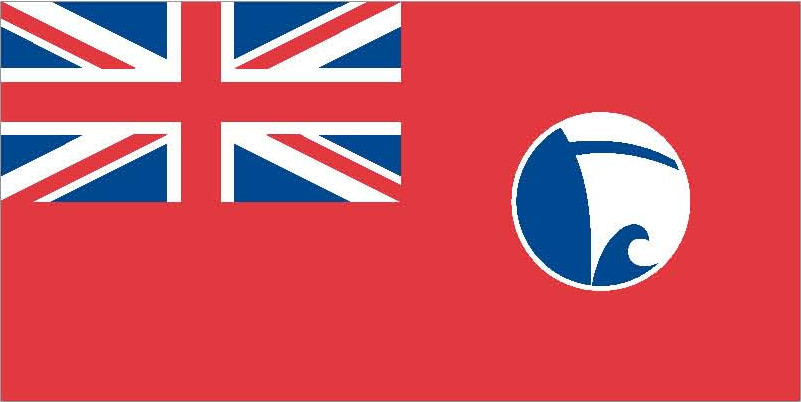Previous names
- 1916 642
Details
Construction
Dimensions
History
CYCLOPS was built in 1915 in Number 6 Boat House at Portsmouth Dockyard and was originally known as Pinnace 642. She was a 42ft rowing launch built by the Royal Navy as a pinnace for the Battleship HMS ROYAL SOVEREIGN (1915). She was used for carrying supplies out to the ship. She was manned by 38 seamen, two to an oar operating from nine thwarts, or oar anchorages. The positions of the stations are still visible today.
Her hull construction is teak, double diagonal. She was originally rowed but subsequently had a Perkins engine installed (90hp). She has special equipment as a mooring workboat - a Ferrari hydraulic crane mounted aft of midships.
H.M.S. ROYAL SOVEREIGN was a Revenge-class (also known as Royal Sovereign and R-class) battleship of the Royal Navy displacing 28,000 tons, and armed with eight 15-inch (381 mm) guns in four twin turrets. She was laid down in January 1914 and launched in April 1915; she was completed in May 1916, but she was not ready for service in time to participate in the Battle of Jutland at the end of the month. She served with the Grand Fleet for the remainder of the war, but did not see action.
Cyclops is the last surviving example of the 42ft rowing/sailing launches used by the Royal Navy over a long period of time, being issued to battleships and other large warships. They were the largest open boats carried. Some were later converted to motor power. Their last operational use was at Gallipoli, where they were used to land troops being towed in to the beaches in a “string” behind steam pinnaces.
CYCLOPS currently is fitted with a diesel engine from a Combine Harvester as she was when in use as a ferry and harbour mooring boat, the historic vessel will be maintained in her present configuration for potential use as a Property Trust Work boat. At the present time there are no plans to carry out changes to revert her to her original state.
Update, January 2024: It is hoped that the launch will complete restoration at Boathouse 4 later this year.
Significance
1. What is the vessel’s ability to demonstrate history in her physical fabric?
Evidence for designs, functions, techniques, processes, styles, customs and habits or uses and associations in relation to events and people. How early, intact or rare these features are may impact on significance.
CYCLOPS was built as a 42ft open pulling launch for the Royal Navy and her hull still retains its original teak, double diagonal construction. She was originally rowed by 38 seamen, two to an oar, operating from nine thwarts. Although these thwarts have been removed and an engine subsequently fitted, the positions of the rowing stations are still visible today. In recent conservation work, she has had one complete rib removed and replaced and some further new timbers are likely to be fitted on her port side. When converted for use as a ferry and then a workboat, a Combine Harvester diesel engine was fitted and specialist mooring equipment was later mounted aft in the form of a Ferrari hydraulic crane.
2. What are the vessel’s associational links for which there is no physical evidence?
Associations with people or places. Off-ship research.
CYCLOPS was built in wartime in 1915 and is typical of the largest open boats carried on battleships and other large warships for use as a ship’s tender. She is a reminder of the last occasion when launches of her kind were used operationally, landing troops at Gallipoli, when they were towed in to the beaches in a “string” behind steam pinnaces. During her naval service in the First World War CYCLOPS was significantly linked to the Battleship HMS ROYAL SOVEREIGN (1915), being one of the 42 foot rowing launches used for carrying supplies out to the ship.
CYCLOPS has strong associations to the city of Portsmouth, being built in Boathouse 6 at the Dockyard and originally registered there, when she was given the number P642. She also has Scottish links, being used as a small ferry carrying people, stores and livestock between the Hebridian islands after leaving naval service and subsequently working as a mooring buoy tender for Crinan Harbour Authority in Argyll and Bute on the west coast of Scotland.
CYCLOPS has been recorded on the National Register of Historic Vessels since 1996. Only two 42ft Royal Naval open pulling launches survive; the other is DORIAN.
3. How does the vessel’s shape or form combine and contribute to her function?
Overall aesthetic impact of the vessel, her lines, material she was built from and her setting. Does she remain in her working environment?
CYCLOPS is a mono-hulled boat with a plumb straight stem and a pointed bow built during wartime for a specific purpose. Her sturdy build and generous beam, plus the double diagonal lower hull and rowing points are from her original build function as a ship’s tender for a large warship. Her design and construction made her fully fit for her intended purpose and available for immediate deployment. CYCLOPS continues to be an aesthetically pleasing open pulling boat, and she remains in her original heritage setting at Boathouse Number 4 at Portsmouth Dockyard pending conservation as an operational exhibit.
Source: NHS-UK team, 26 January 2016.
This statement was developed as part of the Heritage Lottery funded First World War project. http://www.ww1britainssurvivingvessels.org.uk/
Key dates
-
2011
Mini refit on the main deck area and hull at the Portsmouth Naval Base Property Trust
Own this vessel?
If you are the owner of this vessel and would like to provide more details or updated information, please contact info@nationalhistoricships.org.uk

















